Introduction
The Sigma 65mm F2 DG DN is a short telephoto prime lens for Sony Alpha full-frame and APS-C E-mount mirrorless cameras, where it provides a 97.5mm equivalent focal length. It’s also available for Leica / Panasonic / Sigma L-mount cameras.
This new lens is part of the Sigma I series of compact, high-performance, impeccably constructed primes for mirrorless camera systems, which boast a premium all-metal weather-sealed construction, a magnetic metal lens cap and a metal lens hood.
The 65mm F2 DG DN was launched in December 2020 alongside the 24mm F3.5 DG DN and 35mm F2 DG DN lenses, with all three joining the existing 45mm F2.8 DG DN.
It features 12 elements in 9 groups, with one Special Low Dispersion (SLD) element to reduce chromatic aberrations and color fringing and two aspherical lenses which help to control distortion and spherical aberrations.
There’s a Super Multi-Layer Coating to minimize internal reflections so that flare and ghosting do not occur.
This lens boasts a dust- and splash-proof structure and has a minimum focusing distance of 55cm with a maximum magnification of 0.15x.
It has a rounded 9-blade diaphragm which creates an attractive blur to out-of-focus areas of the image and an internal focusing mechanism which means the lens barrel doesn’t move.
There is a stepping motor for fast, quiet and precise auto-focusing, while the focusing ring provides fine manual focus control.
A traditional aperture ring runs from f/2 to f/22 in third-stop increments with an Auto setting also available for camera-based aperture selection.
The Sigma 65mm F2 DG DN lens will be available in January 2021 priced at £649 / $699 in the UK and USA, respectively.
Ease of Use
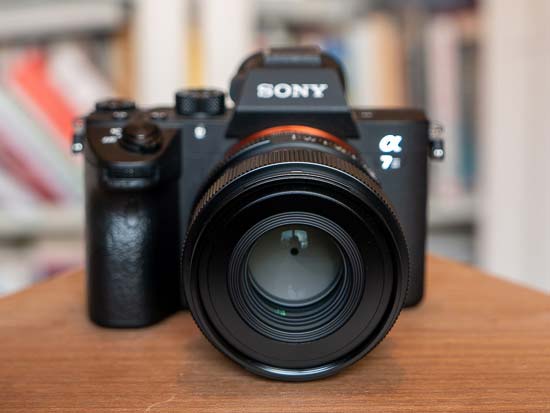
Weighing in at 405g, the all-metal bodied Sigma 65mm F2 DG DN is quite light for such a premium, 35mm full-frame lens.
There isn’t really a direct competitor to this lens from either Sony or another third-party – 65mm is something of a unique focal length for any camera system.
The only other 65mm lens that we’ve reviewed is the manual-focus only Voigtlander 65mm F2 Macro APO Lanthar.
Standard 50mm lenses are probably this Sigma 65mm F2 DG DN’s main rivals. It’s a lot heavier than the Sony FE 50mm F1.8, for example, which at 186g is a whopping 219g lighter than this new Sigma alternative.

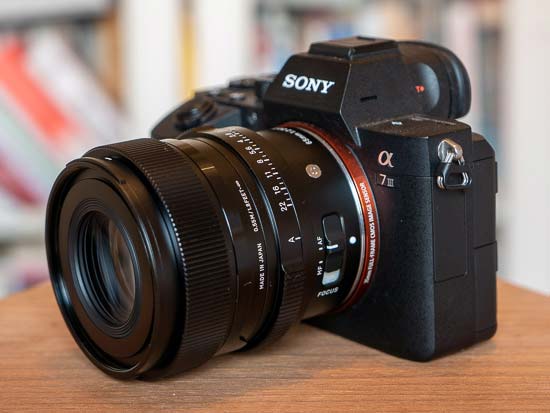
It is also much more expensive than its main Sony rival, to the tune of around £400 / $400, so you really need to be sure that you’ll benefit from the unusual 65mm focal length to justify the extra cost.
Its overall size is well-suited to a camera like the Sony A7 III that we tested it with, as shown in the product photos. Even with the supplied hood attached, it is still quite discrete for a short telephoto lens.
It measures 76.7 x 72mm, making it substantially bigger than the Sony FE 50mm F1.8, which measures 68.6 x 59.5mm.
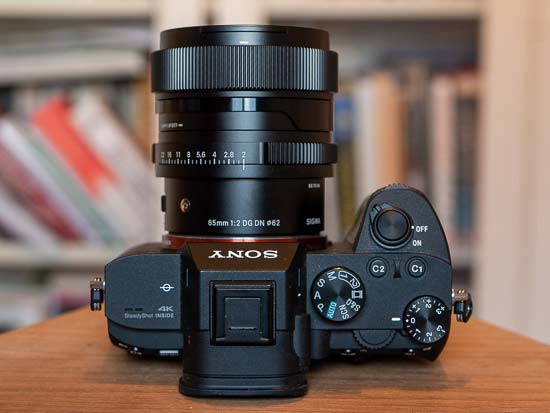
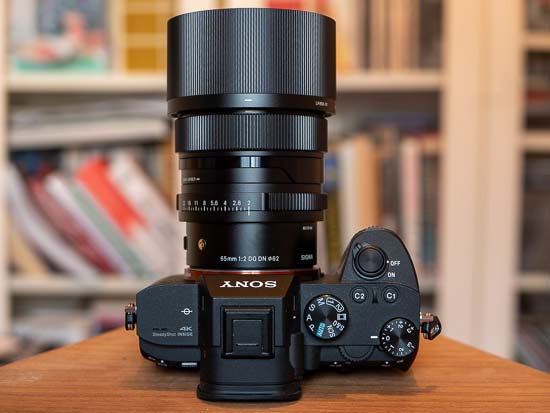
Build quality is simply superb, far exceeding what you might expect from a mid-range, f/2 prime.
Sigma have really gone to town on the new I series, so much so that they’ve explained in great detail just how much thought has gone into it.
It incorporates a brass bayonet mount that’s supposedly more durable than a normal metal mount.
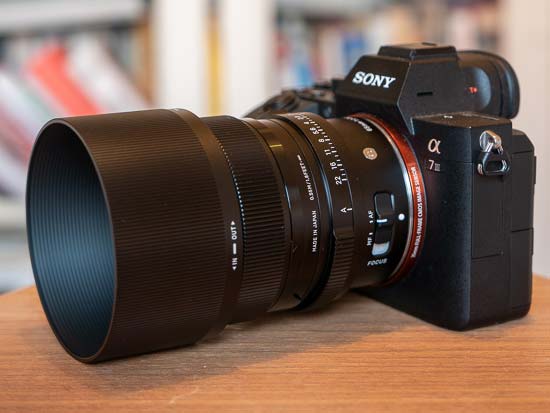

A rubber seal is incorporated into the lens mount’s design to make it dust- and splash-resistant.
The Sigma 65mm F2 DG DN lens has a metal lens mount and it accepts 62mm filters via metal threads on the front of the lens.
This is one of the main drawbacks of this lens – 62mm filters aren’t very common at all, limiting your choice.

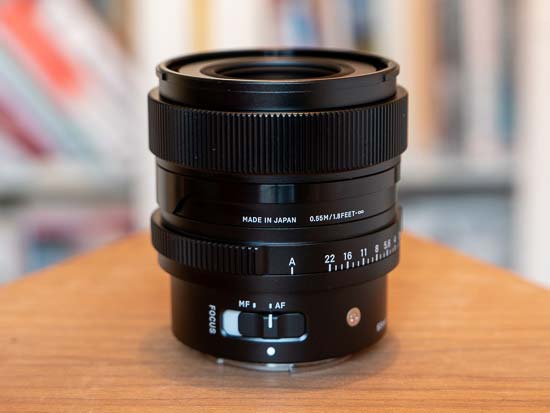
The lens doesn’t feature built-in optical image stabilisation, relying instead on the camera body’s stabilisation system.
The Sigma 65mm F2 DG DN lens has a rather narrow, ridged motor-assisted focus ring that is very nicely damped. Manual focusing is possible by using the focus mode switch to toggle between AF and MF.
There are no hard stops at either end of the range, making it a little more difficult to set focus at infinity. Polariser users should be pleased that the 62mm filter thread doesn’t rotate on focus.
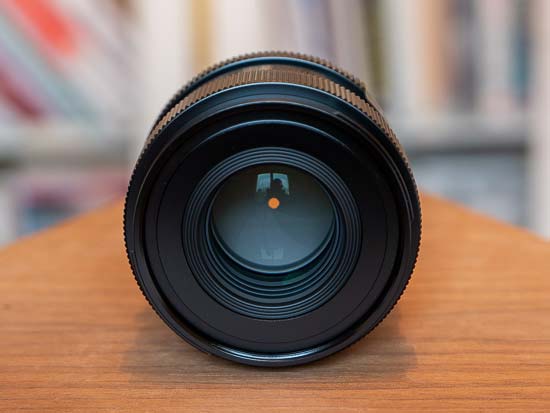
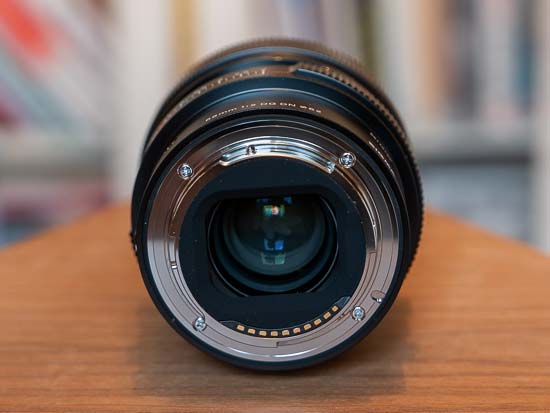
The manual focusing ring is positioned a little too closely to the lens hood when it’s fitted, though, so much so that my right thumb rubbed along the edge of the hood as I rotated the focusing ring. A minor detail, maybe, but still of some importance on a lens where attention to detail is the defining characteristic.
The Sigma 65mm F2 DG DN lens utilises a stepping motor which produces quiet, but not silent, smooth focusing, making it fairly well-suited to shooting both stills and video, with the overall lens length remaining constant during focusing.
When it comes to auto-focusing, it proved to be a quick performer on the Sony A7R III camera that we tested it with.
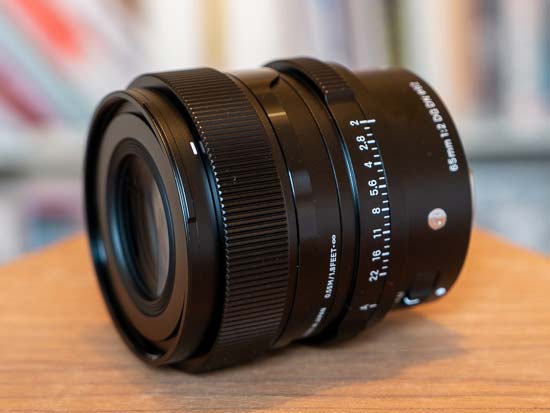
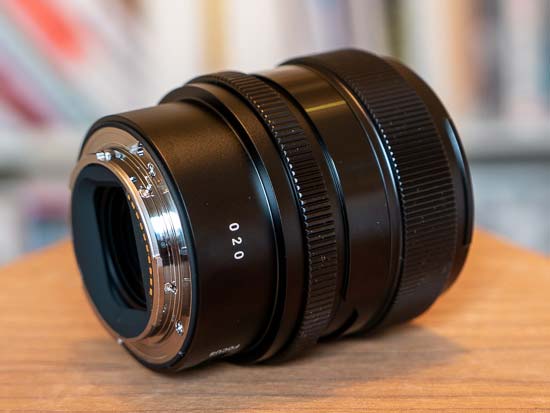
We didn’t experience very much “hunting”, either in good or bad light, with the lens accurately focusing almost all of the time.
Sony’s near flawless Eye AF works perfectly with this lens, quickly locking onto and tracking the subject’s eye despite the wide-angle view, and it fully supports Sony’s DMF and AF+MF shooting modes.
The Sigma 65mm F2 DG DN lens features an aperture ring that has 1/3EV stops ranging from f/2 to f/22 and an Auto setting if you prefer to set the aperture via the camera body.
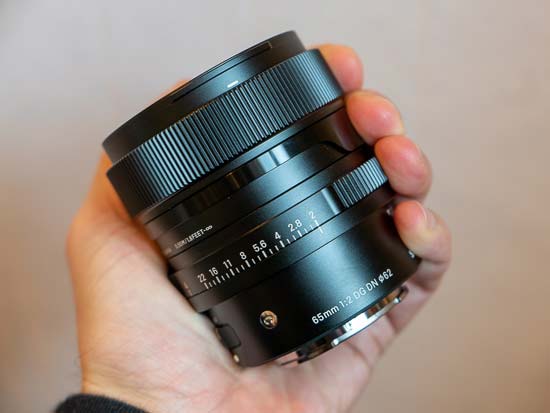

Sadly there’s no Click switch on the lens barrel that lets you de-click it for silent operation during movie recording.
The Sigma 65mm F2 DG DN lens isn’t supplied with a lens case, but it does come with a very good quality, hybrid plastic and metal, circular lens hood (LH656-01) that continues the ribbed texture of the lens barrel, and also an innovative magnetic metal lens cap (LCF62-01M), in addition to a normal plastic cap.
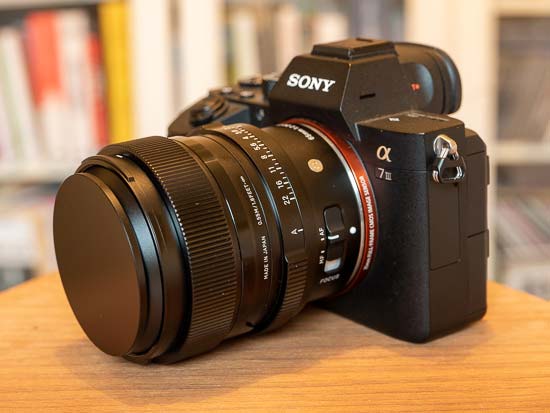

This dedicated metal cap clips to the front surface of the lens magnetically, and there’s even an optional magnetic metal lens cap holder (CH-11) that can be clipped to a bag or a belt.
Note that the magnetic lens cap can’t be used with filters and is quite awkward to use when the lens hood is fitted.
Focal Range
The 65mm focal length provides an angle of view of 36.8 degrees on a full-frame camera.

Chromatic Aberrations
Chromatic aberrations, typically seen as blue or purple fringes along contrasty edges, were not very apparent in our test shots, only appearing in very high contrast areas. The example below show the worst-case scenario.
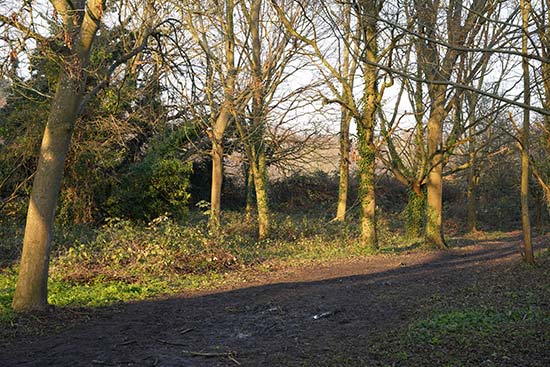
Light Fall-off
With the lens set to its maximum aperture of f/2, there is some light fall-off in the corners, requiring you to stop down by at least 2 f-stops to completely prevent it.

Distortion
There’s quite a lot of pincushion distortion evident in the RAW files – the Sony Alpha A7 III automatically and successfully applies corrections to the JPG files.

JPEG

Raw

JPEG

Raw
Sunstars
The Sigma 65mm F2 DG DN is capable of producing quite nice sunstars when stopped-down to f/16 or f/22, as shown below.
The lens is a little susceptible to flare when shooting directly into the sun, though, even with the supplied lens hood fitted, but it’s not too much to worry about.



Macro
The Sigma 65mm F2 DG DN isn’t claimed to be a macro lens, offering a minimum focusing distance of 55cm with a maximum magnification of 0.15x, putting it on par with many 50mm lenses. The following examples demonstrate how close you can get to your subject.





Bokeh
Bokeh is a word used for the out-of-focus areas of a photograph, and is usually described in qualitative terms, such as smooth / creamy / harsh etc.
In the 65mm F2 DG DN lens, Sigma have employed an iris diaphragm with 9 rounded blades, which has resulted in very appealing bokeh for a moderately telephoto lens.
We do realise, however, that bokeh evaluation is subjective, so we’ve included several examples below for your perusal.
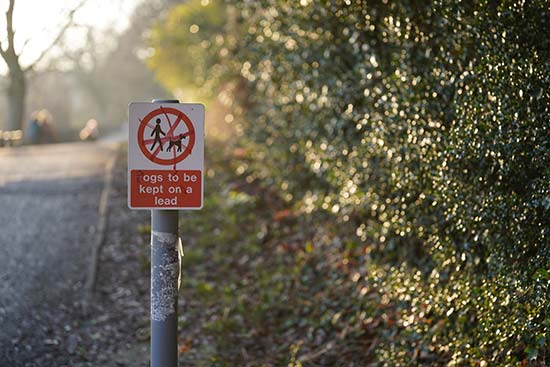





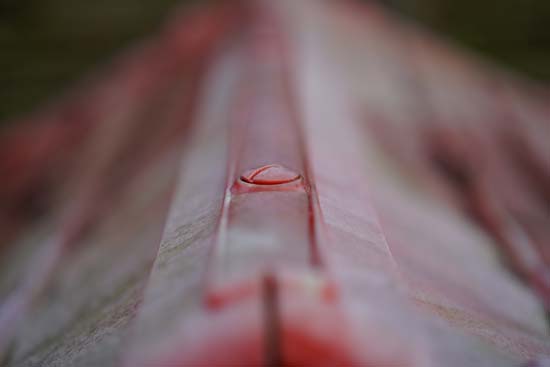

Sharpness
In order to show you how sharp this lens is, we are providing 100% crops on the following page.








